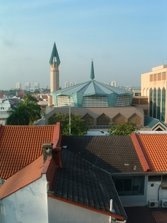
SINGAPORE, Jan 8 — Singapore is lending Malaysia its expertise in developing green reserves for eco-tourism.
The tourism agencies of both countries have started a joint feasibility study to look into how an attraction like Singapore's Sungei Buloh Wetland Reserve in Kranji can be replicated across the Causeway.
The areas that Malaysia hopes to develop into tourism spots are all in Johor — Sungai Pulai, Tanjung Piai and Pulau Kukup.
All have been classified as Ramsar sites, a title granted by the Geneva-based Ramsar Convention Bureau to identify wetlands of international importance.
Johor's lush Sungai Pulai alone spans 9ha. Officially gazetted in 1923, it is the country's second-largest mangrove forest.
It sits at the mouth of a lowland tropical river basin, and is home to seagrass beds, intertidal mudflats and an inland freshwater riverine forest, which teem with animal life.
The joint feasibility study, expected to be completed this year, is the first such venture into the tourism sector.
It will identify appropriate activities for visitors and the kind of people likely to go there, as well as explore the adoption of a code of management practices.
The first mention of the collaboration between Singapore and Malaysia in this area came from Minister for National Development Mah Bow Tan last year, when he gave an update on Singapore's involvement in Iskandar Malaysia, a project to develop southern Johor's economic corridor.
Collaborations between the two countries in this economic zone come under a joint ministerial committee.
Mah added that the two sides' environment agencies are also sharing expertise in areas such as river cleaning.
Malaysia's senior regional government officials have been quoted in the media as having said that the move to develop Sungai Pulai is in line with the plan to build a viable tourist hot spot there.
Johor Mentri Besar Datuk Abdul Ghani Othman told the New Straits Times: “Together with the rapid development in Iskandar Malaysia, the state aims to preserve its natural beauty and carry out sustainable development.”
When contacted, John Conceicao, director of strategic planning and innovation at the Singapore Tourism Board, said it was working with its Malaysian counterpart on developing joint marketing campaigns for the nature sites “to potentially increase tourism flows into and between Iskandar Malaysia and Singapore”.
Professor Leo Tan, director of special projects at the National University of Singapore, said that if the findings of the study are followed through and adopted, the area's vital eco-system could be preserved.
Pointing to Sungei Buloh here, he said that it had, with proper management, “morphed out of what was nothing more than a dilapidated prawn pond”.
He added: “The key for any country lies in optimising its resources in a rational and educated manner... to develop an appreciation and understanding of why we need to protect our biodiversity.” — The Straits Times
Source

No comments:
Post a Comment